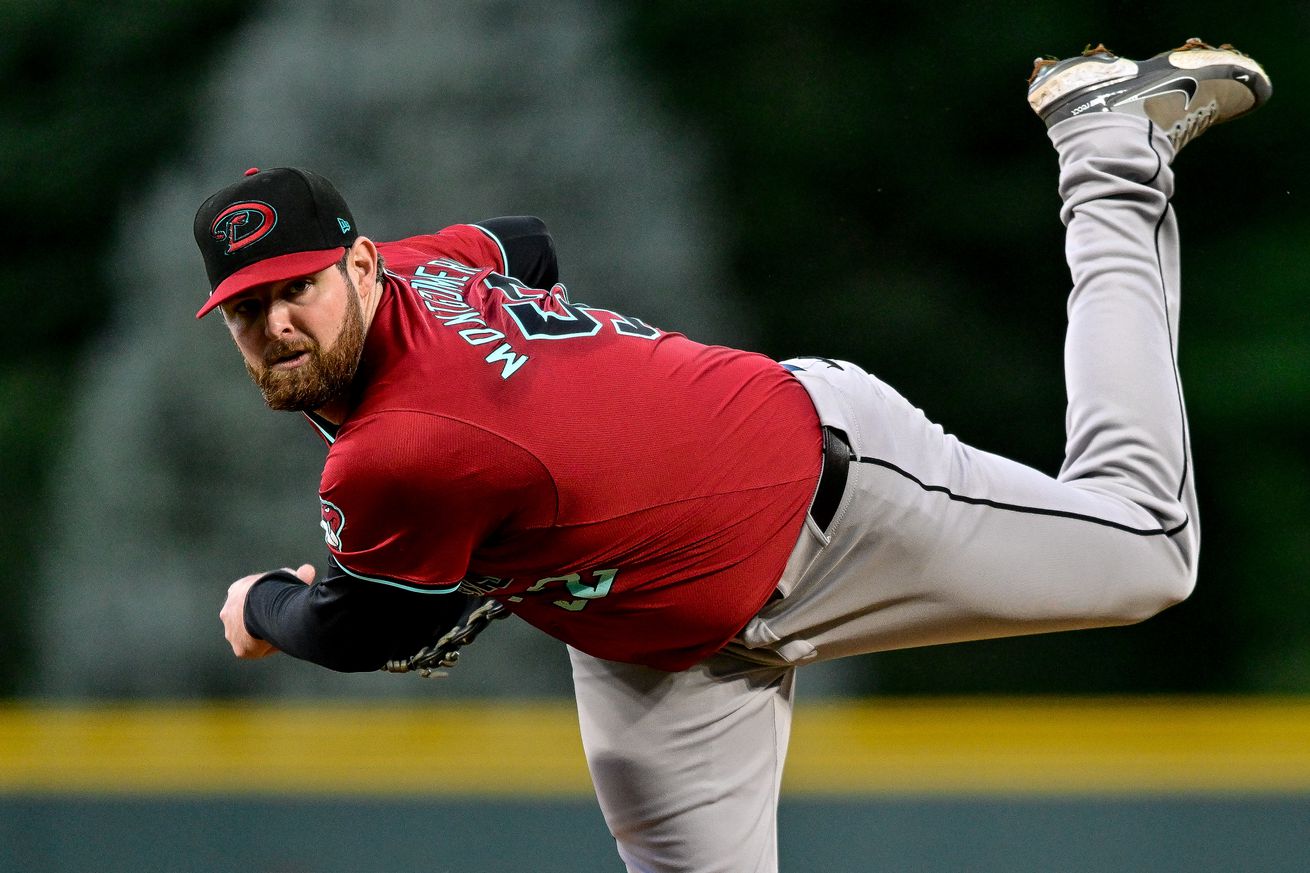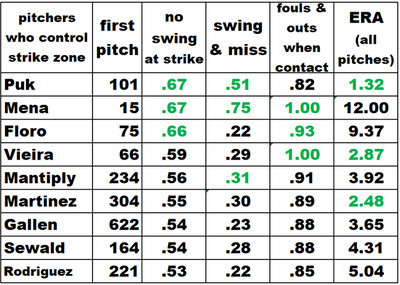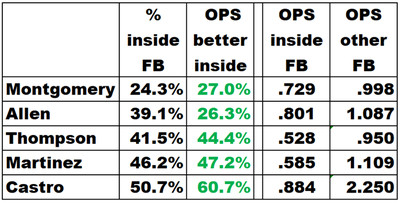
9 D-backs control the strike zone.
Inspiration.
Today, Jordan Montgomery inspired me to write. After writing A New Plan for Diamondbacks Pitchers, Jordan Montgomery continued to concern me (he must improve, but how can he improve?). A better fastball was not likely his path forward. And whatever path he takes, participating in spring training will enhance his path forward. I found two different paths. One path seemingly was only relevant to Montgomery. The other path was relevant to all the Diamondbacks pitchers.
Let’s look at the path relevant to all the Diamondbacks pitchers.
First Pitch Outcomes that Show Control of the Strike Zone.
There are four positive outcomes that show control of the strike zone:
Called Strike. Although you could argue that the batter was waiting for a hittable pitch (instead of missing an opportunity), the outcome was favorable for the pitcher, who is now ahead in the count.
Swing and Miss. Although you could argue that the batter was unable to hold up on their swing, the outcome was favorable to the pitcher, who showed an unhittable pitch and who is now ahead in the count.
Positive Contact:
- Foul Ball. Although you could talk about distance if the batter could time pitches better, the outcome was favorable for the pitcher who is ahead in the count.
- Out on Ball-In-Play. Although you could talk about excellent defense, the outcome was favorable for the pitcher who got the batter out.
Note: This article combined the last two outcomes because they both involved contact with the baseball.
Nine Pitchers Who Controlled the Zone on the first pitch.
This season, each pitcher who was above average for all three statistics, was deemed to have controlled the zone. Despite being above average in only two of the three statistics, AJ Puk was added to the list because he was top-two in two of the three statistics, and it did not hurt that he had the lowest ERA on the team.
The following table shows nine pitchers who controlled the strike zone on the first pitch. The top three on each statistic are highlighted in green.

2024 Season. First pitch of each PA. Data from Baseball Savant.
An important note is that Mena, Floro, and Vieira had fewer pitches than the others. Also, Mena and Floro had high ERAs. Floro was designated for assignment and is now a free agent. Nevertheless, their control of the strike zone shows they have great potential for being elite pitchers. Expanding upon that idea, Mena and Vieira had above average induced vertical break on their 4-seam fastballs (only 6 Diamondbacks pitchers were above average). And most remarkable is that Mena is only 21 years old!
Closer notes:
- From 1 July through the end of the season, Sewald’s ERA was 7.04 and his five saves were not encouraging when they arrived with two blown saves and two blown losses.
- In all three measures, Martinez’s control of the strike zone was better than Sewald’s control. That control will serve him well in the closer role.
The Differences Between Two Pitchers With Elite Induced Vertical Break.
Although Ryne Nelson and Scott McGough have elite induced vertical break on their 4-seam fastballs, their pitching performances are very different. Ryne Nelson is a starter with an ERA of 4.71 while Scott McGough is a reliever with an ERA of 7.44. One way to explain that difference is to look at who controlled the strike zone on the first pitch. Arguably, Ryne Nelson has better control of the strike zone. The following table shows Ryne Nelson’s statistics for (called strikes) and (swing and miss) were better than Scott McGough, while Scott McGough’s was better for (fouls & outs on contact). Green highlight means better than Diamondbacks’ average and red means worse than Diamondbacks’ average (ERAs not highlighted).

2024 Season. Data from Baseball Savant.
Jordan Montgomery – what is a path forward?
Better control of the strike zone could be part of the path forward for Jordan Montgomery.
The following table shows that on the first pitch Montgomery had better (swing and miss) than the Diamondbacks average. And the other two statistics were far from the worst of the Diamondbacks’ pitchers. Although better control of the strike zone is relevant to all pitchers, it is not 100% of the only path forward for Jordan Montgomery.

2024 Season. Data from Baseball Savant.
Let’s look at a different path forward that could possibly improve pitching results for Jordan Montgomery. (Yes, I’m on a tangent but with the positive intention of finding a path forward for Jordan Montgomery.)
The following table looks at pitching inside fastballs to right-handed batters. It compared inside fastballs to fastballs in all other locations including down the center of the strike zone. It only looks at the five pitchers (including Montgomery) whose OPS was at least 20% better with inside fastballs. Jordan Montgomery pitched a lot less inside fastballs than the other four. You could note that Castro and Martinez had higher fastball velocities.
Last season, Logan Allen and Ryan Thompson had similar fastball velocities (92.1 vs 91.3 and 92.5 MPH), and about 40% of their fastballs are inside fastballs. Perhaps if Jordan Montgomery increased the percentage of his inside fastballs from 24% to about 40%, his pitching results would improve.

2024 Season, right-handed batters. Inside means attack zones 1,4,7,11,14,17,21,24,27,31,34,37. Data from Baseball Savant.
Summary.
Three ways to control the strike zone are called strikes, swings and misses, and positive contact (fouls and outs on balls-in-play).
On the first pitch, nine Diamondbacks’ pitchers controlled the strike zone, with arguably AJ Puk with the best control. Meno, Floro, and Vieira had less pitches but nevertheless showed potential to be elite pitchers, especially Meno and Vieira because their above average induced vertical break.
Martinez had better first pitch control of the strike zone than Sewald.
Control of the strike zone could explain the difference in pitching performance between Ryne Nelson and Scott McGough, who each have elite induced vertical break.
Although Jordan Montgomery could improve his control of the strike zone, he could also increase the percentage of his fastballs that are inside when pitching to right-handed batters.
